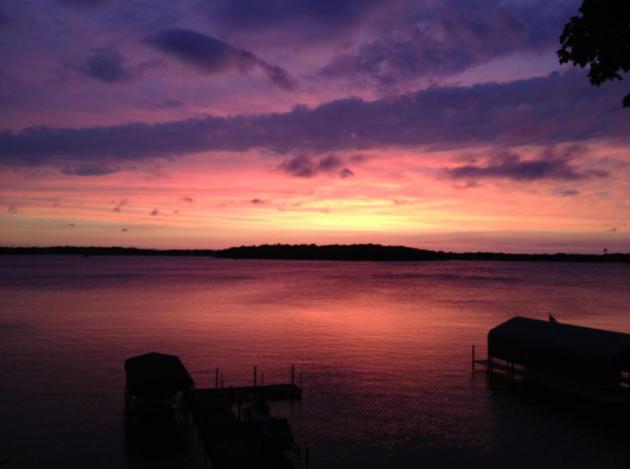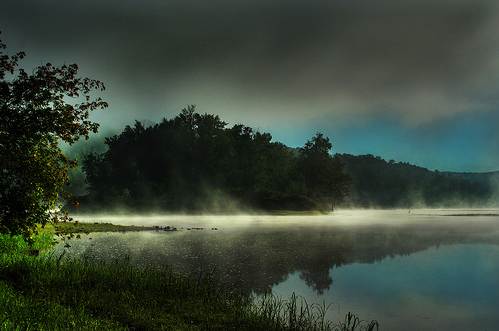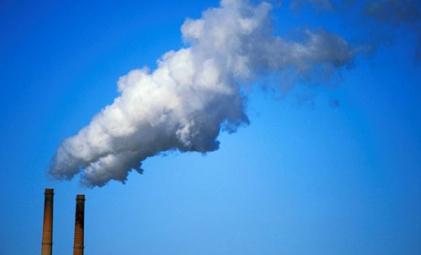58 F. average high on October 14.
68 F. high on October 14, 2015.
October 15, 1968: Unseasonably warm weather moves into central and southern Minnesota. The high was 85 in the Twin Cities.
October 15, 1899: Heavy rain falls, with 3.2 inches in the St. Cloud area and 2.1 inches in Willmar.

Not Bad for October, But Not Quite Indian Summer
Considering we could be knee-deep in slush I don't take 70s in mid-October for granted. Not when the sun is as high in the sky as it was in late February. A lukewarm breeze, without the humidity, bugs and raging thunderstorms.
At the rate we're going this may just be Minnesota's wettest year on record. Dr. Mark Seeley reports a record 50.6 inches of rain in Waseca, with over 2 months left to add to the tally.
Warmth and moisture was ideal for Minnesota's corn crop: a record 1.49 billion bushels expected; higher than 2015's previous record of 1.43 billion bushels. Assuming farmers can get out into their mud-swept fields.
A surge of milder air sets off a smear of clouds this weekend; if the sun breaks through for a couple hours we could hit 70F. The best chance of showers and T-storms comes Sunday night with a gradual cooling trend next week. No drama.
By the way, the term "Indian Summer" refers to unusually mild weather following the first frost, which MSP still hasn't seen, at least not officially.
Then again this is America. You have the freedom to call it whatever you want.
Who am I to stop you?

Temperatures Trend Above Average into Tuesday. No bitter air shaping up looking out 7-10 days, although it will cool off again by the middle of next week. Parts of the Twin Cities metro (close-in suburbs) could, in theory, wind up with a growing season 30 days or more longer than average. ECMWF data: WeatherBell.
Cold and Stormy Correction by Late October? Confidence levels are low, but the 2-week 500 mb forecast (GFS) suggests strong zonal winds buckling, carving out a deep trough of stormy low pressure over the Plains and Midwest. Which could, in theory, translate into a series of rain events, even wet snow in time for Halloween.

Hurricane Force Winds Coming to Oregon/Washington State. Dan Satterfield has more details on the 1-2 punch; an even stronger storm comes ashore later today with damaging winds and torrential rains.
Hurricane Matthew Brought 1,000 Year Record Rainstorms to North Carolina. This would be the 6th thousand-year flood to strike the USA since October of 2015 (Texas, South Carolina, West Virginia, Maryland, Louisiana - now North Carolina). Here's an excerpt from Pacific Standard: "The storm swept in by Hurricane Matthew has produced rainfall that exceeds the level expected about once every 1,000 years, according to a statistical analysis using National Oceanic and Atmospheric Administration data. Matthew broke numerous rainfall records in some of North Carolina’s toughest-hit towns, marking another spike in this year’s extreme weather. The new rainfall records were enabled by warming in the ocean and coastal atmospheres, which hold more water as temperatures increase — with a few cities across the Southeast reporting record levels of air moisture during the storm..." (October 6 file image: NOAA and AerisWeather).
Wind Patterns In The Lowest Layers of Supercell Storms Key Tornadoes. Here's an excerpt of an interesting press release at EurekAlert! Science News: "...We noticed that the biggest difference between tornadic and nontornadic storms was the wind in the lowest 500 meters near the storm," Coffer says. "Specifically, it was the difference in the way the air rotated into the storm in the updraft." All storms have an updraft, in which air is drawn upward into the storm, feeding it. In supercells, the rising air also rotates due to wind shear, which is how much the wind changes in speed and direction as you go higher in the atmosphere. Coffer's simulations demonstrated that if wind shear conditions are right in the lowest 500 meters, then the air entering the updraft spirals like a perfectly thrown football. This leads to a supercell that is configured to be particularly favorable for producing a tornado, as broad rotation at the ground is stretched by the updraft's lift, increasing the speed of the spin and resulting in a tornado..."
File photo credit: Caryn Hill.
President Obama Orders Government To Prepare for "Space Weather" Chaos. God help us if an X-Class solar flare hits the U.S. directly, because we may get an instant glimpse of life in the mid-1800s. Here's an excerpt from NBC News: "Turning his attention to the heavens — and how turbulence there could create chaos on Earth — President Obama directed the federal government Thursday to come up with a plan to deal with "space weather." Space weather, by the way, is a catch-all for disturbances in the area between the sun and Earth, such as solar flares, that wreak havoc on the electrical power grid, GPS systems, aviation equipment, satellites and other technology that have become integral to human life..."
Photo credit: "The Aurora australis, also known as the southern lights, glows above the Earth on July 15, 2012." Joe Acaba / NASA via AP.

Kids and Elderly People In These 9 States Spend a Scary Amount of Time Near Fracking. Here's a clip from ThinkProgress: "While
the impact of fracking operations on the health of people living nearby
was once uncertain, several studies in recent years have found that
living near fracking sites — which are known to release carcinogenic
compounds, as well as greenhouse gases — heightens the risk of asthma
and other respiratory ailments. Children are more sensitive than healthy
adults to chemicals and particles in the air, but across the United
States at least 650,000 students from kindergarten to high school spend
their days within a mile of a fracking facility, according to a new report from Environment America..."
Photo credit: "Fracking takes place too close to communities, activists and health reports say." CREDIT: AP Photo/David Zalubowski.
State Regulators Approve Xcel's Plan to Shut Down Becker Coal-Fired Plants. The Star Tribune reports: "Minnesota
utility regulators Thursday approved Xcel Energy’s plans to shut down
its big coal-fired generators in Becker, Minn., by 2026, a move that
will eventually eliminate the state’s largest emitter of greenhouse
gases. They also directed Xcel to submit a plan for replacing a big
chunk of that lost coal generation at its Sherco plant. But the Public
Utilities Commission (PUC) didn’t approve Xcel’s solution of building a
large gas-powered generation plant on the Sherco site, a partial power
replacement. Essentially, the PUC asked Xcel to look more closely at
renewable energy alternatives — along with the gas plant — to help
compensate for the loss of the Sherco coal plants..."
Photo credit: "The Mesquite 3 solar array in Arizona." (Sempra Energy)
Clean Power Just Turned Back the Clock on Global Warming Gases. Here's an excerpt from Bloomberg: "It looks as if all those wind and solar farms in the U.S. are making a dent in greenhouse gases that cause global warming.
During the first six months of the year, carbon dioxide emissions from
America’s energy industry dropped to the lowest point since 1991,
according to a statement
Wednesday from the U.S. Energy Information Administration. That’s in
part because warmer-than-average temperatures in the first quarter
prompted fewer people to crank up their thermostats, lowering energy
consumption. It’s also because clean energy installations increased 9
percent during the first half compared to a year earlier, reducing the
need for power generated by burning coal and natural gas..."
One Day, Cars Will Connect With Your Fridge and Your Heartbeat. Here's a snippet of a fascinating article at The New York Times: "...The
next generation, he said, will focus on managing our entire digital
lives, aided by semiautonomous systems that assume more responsibility
for actual driving tasks. “Once we get to the world of autonomous
driving, these cars are not going to be about horsepower but about the
in-vehicle experience and how it’s connected to your lifestyle,” Mr.
Moinzadeh said. “The car will talk to all your connected things, whether
it’s your refrigerator or your home security system...”
Photo credit: "Connected Car services become contextual to the driver’s location and lifestyle." Credit Syda Productions.
Image credit: arizonaehomes.com.

TODAY: Mostly cloudy, breezy and milder. Passing shower or sprinkle. Winds: SW 10-15. High: 68
SATURDAY NIGHT: Patchy clouds. Low: 51
SUNDAY: Still mild for October. Lot's of clouds - few T-storms late. Winds: SE 8-13. High: 69
MONDAY: Gray, turning cooler, few sprinkles. Winds: NE 8-13. Wake-up: 56. High: 68
TUESDAY: More clouds than sun, temps. close to average. Winds: NW 10-15. Wake-up: 53. High: 61
WEDNESDAY: Partly sunny, feels like fall again. Winds: NW 8-13. Wake-up: 43. High: 57
THURSDAY: Early frost in the suburbs, blue sky. Winds: NE 7-12. Wake-up: 37. High: 52
FRIDAY: Clouds increase, no weather drama. Winds: S 8-13. Wake-up: 38. High: near 60
Climate Stories....
Historic Shrinking of Antarctic Ice Sheet Linked to CO2 Spike. Climate Nexus
reports: "Twenty-three million years ago, the Antarctic Ice Sheet began
to shrink, going from an expanse larger than today’s to one about half
its modern size. Computer models suggested a spike in carbon dioxide
levels as the cause, but the evidence was elusive — until now. Ancient
fossilized leaves retrieved from a lake bed in New Zealand now show for
the first time that carbon dioxide levels increased dramatically over a
relatively short period of time as the ice sheet began to deteriorate.
The findings, appearing in the journal Earth and Planetary Science Letters,
raise new questions about the stability of the Antarctic Ice Sheet
today as atmospheric CO2 concentrations rise to levels never before
experienced by humans..." (Image: Pexels).
Scientists Warn Negative Emissions Are a "Moral Hazard". Will we ever be able to (cost-effectively) suck CO2 out of the air to slow the global warming trend? Perhaps - but can we count on it? Here's an excerpt from Climate Central: "Removing carbon dioxide emissions from the atmosphere to prevent global warming from becoming catastrophic may be a fool’s game amounting to a “moral hazard par excellence,” according to a paper published Thursday in the journal Science. Nobody knows if atmospheric carbon removal — known as negative emissions — will work, and it could delay critical cuts to emissions while tacitly giving people license to pollute, the paper says..." (File image: NASA).
Here's Why Many Young Voters See Climate Change as THE Issue in 2016. Public Radio International has the story: "...Climate change has intensified the drought in California, which has left many wells in California’s agricultural Central Valley without water.
Communities vulnerable to flooding have the opposite problem, as we saw
in Louisiana last month when 7.1 trillion gallons of rain fell in one
week. Worldwide, average temperature records are broken month after
month, with increasingly adverse effects the world over. And rising sea
levels are already causing more destructive and dangerous storm surges,
as we witnessed with Hurricane Matthew last week. Climate change will
affect my career, my family, my community, my everything. For my
generation, millennials, it is so much more than the “environmental”
issue previous generations understood it to be..."

No comments:
Post a Comment